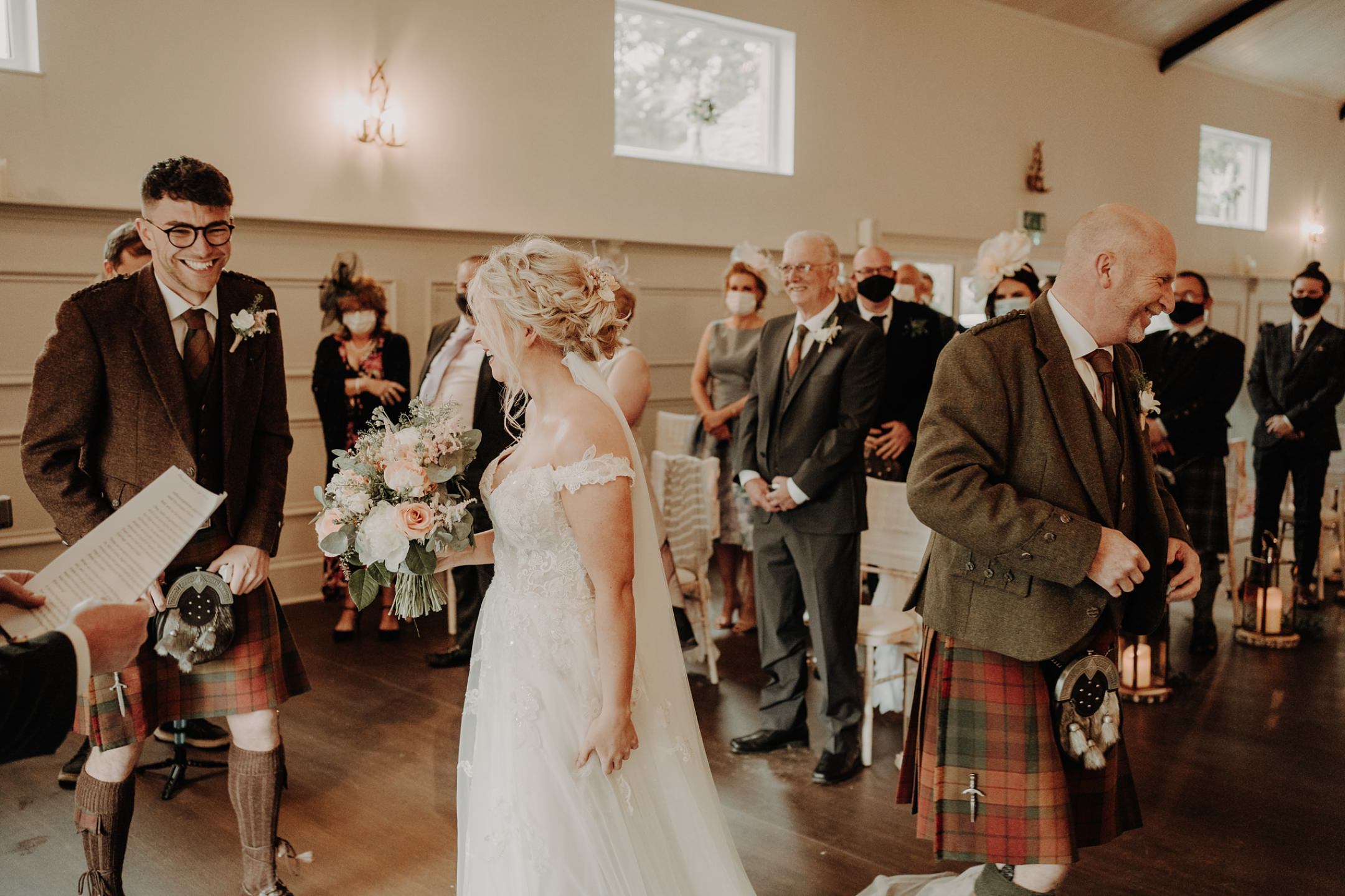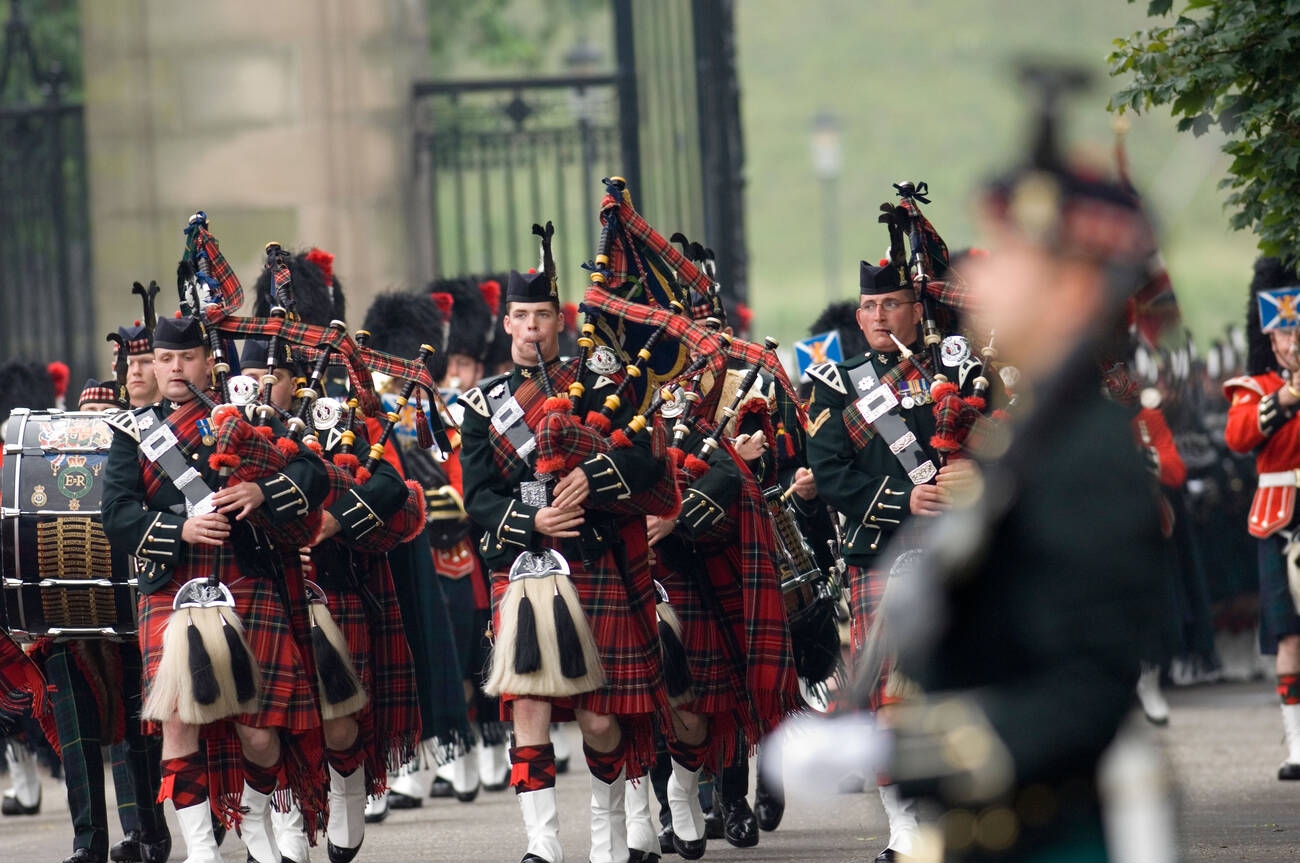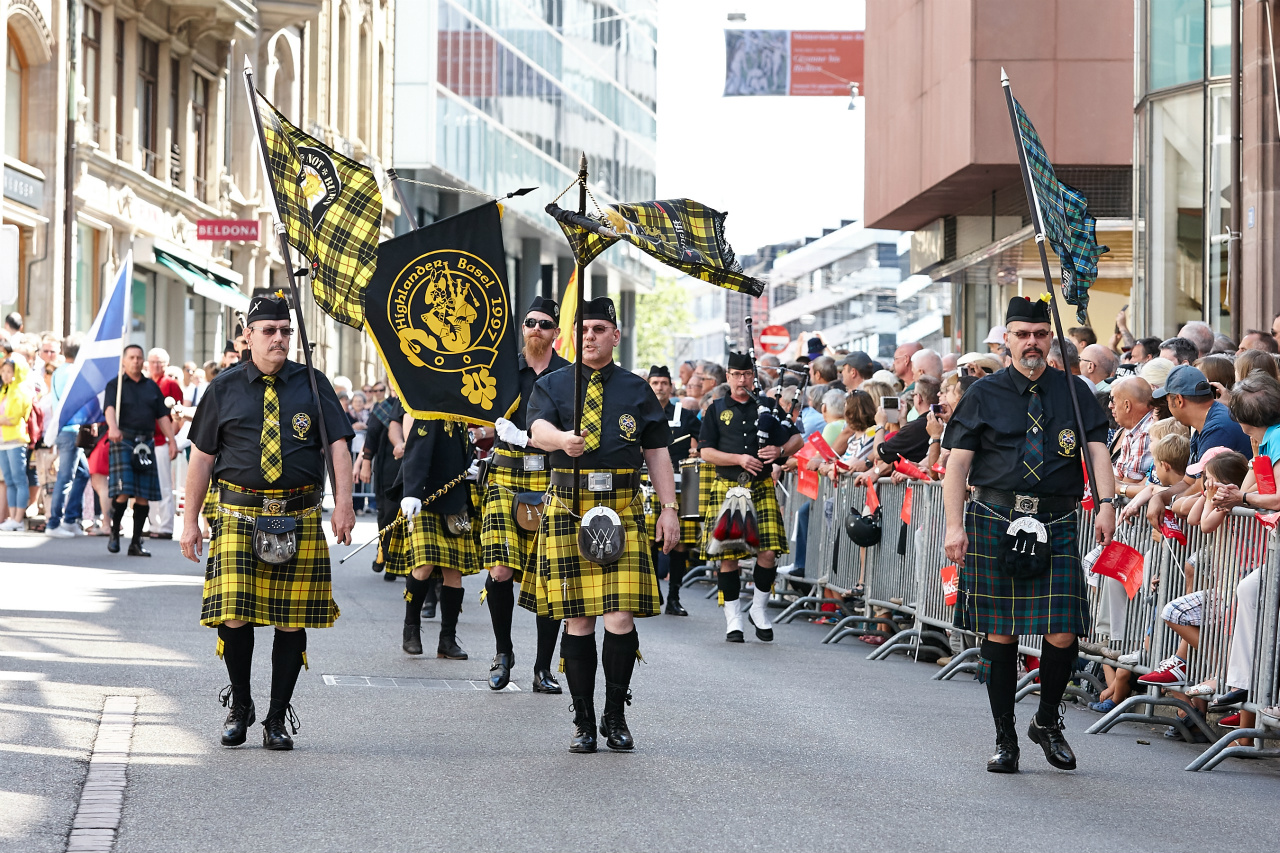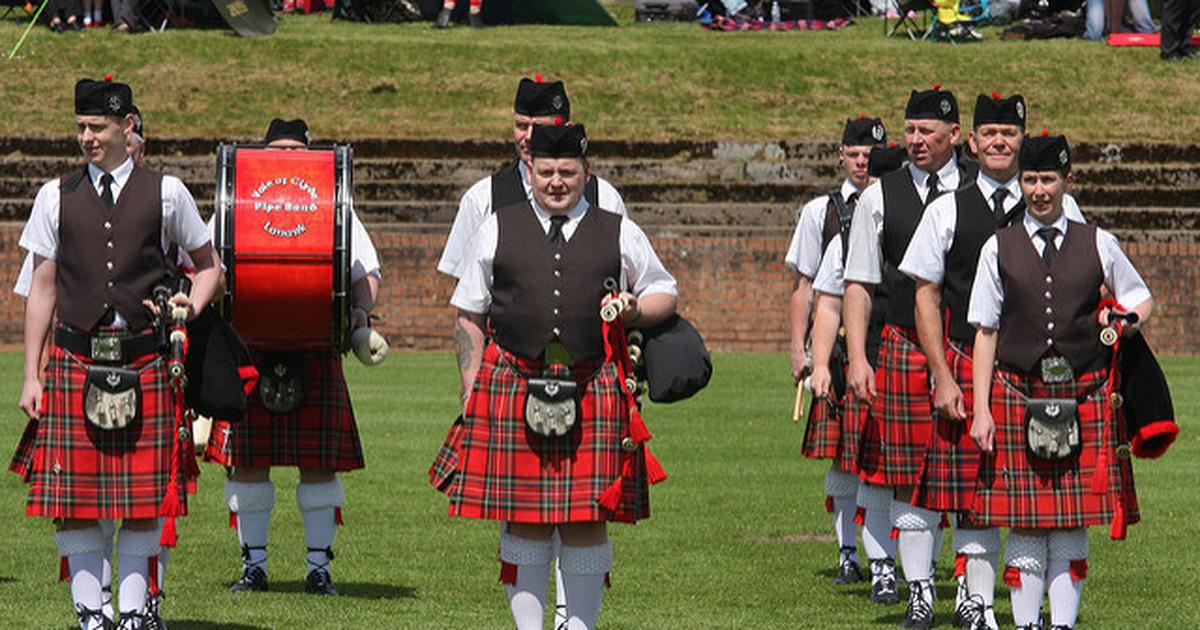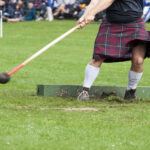Tartan fabrics are a plaid pattern with a name and background associated with a particular Scottish family. The majority of these distinctive designs are found in historical archives or databases online as tartans of clans.
But first, a note about the wording. In America, the terms “plaid” and “tartan” are often used in a variety of ways. Both terms can refer to any pattern that is plaid with vertical and horizontal lines that cross.
In Scotland, the term “plaid” first meant the blanket or piece of clothing. The term “tartan” described the woven pattern.
The famous Scottish Kilt could have come through the use of tartan blankets. These blankets would drape over shoulders. Scottish people referred to them as “plaids.”
There is no way to know what happened to the blankets when they became pieces of clothing that required intricate pleating and belts to the waist. This practical choice lets Scottish men be warm and hands-free at the same time!
Nowadays, the term “tartan” refers to unique Scottish designs that are associated with specific families or clans. The patterns are made up of more than two colors. There are also irregular crisscross patterns, which make the appearance of a complicated pattern.
Additionally, some tartan designs contain what’s known as a “sett.” In plaid designs, it is a square that serves as a reference point for the remainder of the design. It is repeated repeatedly. The square could also include intricate cross-stitching of various hues.
History
When it was the Scottish highlands, the majority of clans or towns were equipped with a weaver to weave fabric for the local community. In time, weaver created distinctive plaid patterns for town men to wear to make it easy for them to identify themselves. In a way, the tartan functioned as an official uniform for teams.
Weavers frequently employed natural dyes in the creation of the colors they utilized. This made it possible to create intricate sets. The repeated crisscross patterns distinguished the tartan designs from one another.
The term “tartan” probably originated from the French word “tartaine,” which means checked cloth.
If you’ve gone through all the books and watched each season of outlander You are aware of Scotland’s struggle for independence. Scotland was a ferocious fighter to become an independent country throughout the history of the world. Scotsmen frequently carried tartans of their clan as identifications in these combats.
The 16th century Culloden was the name of the game. Culloden was the final battle of Bonnie Prince Charlie’s Jacobite rebellion. England prohibited the wearing of tartans of clans in the “Disarming Act.” This terrible period of history witnessed the equivalent of an era of genocide for Highland families. A century of history and culture were wiped out.
Even with the tragic events, It is fascinating to consider that the oppressive authorities saw the tartan motif as an attack. Clan patterns were so powerfully a symbol of the highland culture that the cloth itself was an actual threat! The ban lasted for over 30 years before it was repealed in 1782.
In the past, many Scottish families had emigrated to America to seek the promise of freedom that they had been denied in their native country.
Is Tartan Plaid Irish or Scottish?
Although tartan plaid is a distinctly Scottish invention, however, the 19th century saw the rise of distinctive Irish plaids, too.
Scottish tartan designs belong to a particular clan or family and you will find more than 255,000 unique tartan plaid designs currently registered! Irish plaid patterns were developed in the past to represent every county in Ireland as an emblem of pride for the nation.
For instance, if you reside in Galway it is possible to be wearing the Galway colors on your kilt when you march in an event.
Do all Scottish families wear a Tartan?
There are a few exceptions. Not all Scottish surname comes with a historical tartan design that is registered to them. People of Scottish heritage often prefer the tartan that belongs to the name of their mother’s maiden name in this instance.
Nowadays, Scottish districts, sports teams, and even businesses frequently have a tartan-themed logo in addition. You can wear the tartan to show their loyalty to their team of choice!
With more than 25,000 officially recognized tartans in the database, there is a high chance of finding one of significance to your family’s history in the event that you have a Scottish lineage.
Highland kilts kilts for men Scottish Tartan kilts What is Tartan Fabric
Last modified: February 15, 2022



